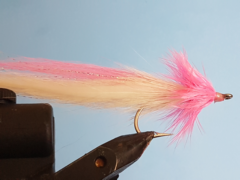Saltwater – estuary
{{start}}
{{end}}
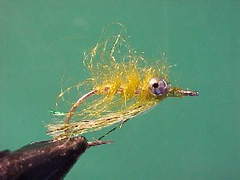
{{+1}}CNN – Chatto’s original{{-1}}
{{start}}
No this is not a fly promoted by a news network, rather the CNN stand for "Cheap aNd Nasty". I first tied this fly for use around structure where if you don't loose a few flies then your not in the game. The fly I had previously used in those situations was an estuary fly that cost between $2 and $3 to make. Doesn't sound like much but after 5 or 6 snags in a session you have to wonder. The CNN costs less than $1 to tie, is easy to tie and it works really well either fished alone or as a dropper fly behind a popper or beetle.{{end}}

{{+1}}Wiggle smelt{{-1}}
{{start}}
At slow speeds of retrieve it does just what it is designed to do. It's light enough to cast on a fly rod and it swims with a true wiggling action. The down side of course is that if you strip too fast it does not have the weight to stay on track. As long as you keep that limitation in mind it certainly has its application.{{end}}
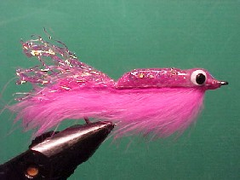
{{+1}}Zonker rattler{{-1}}
{{start}}
This fly has a number of particularly useful applications. For Bass and EP's and in discolored water it works well with a zonker strip back. In Estuaries it works well with a back of Super hair. As a prospecting fly it can be fished at a variety of depths. Perhaps the best method is to count the fly down and then jig it through the area you believe is holding fish.{{end}}
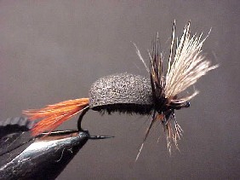
{{+1}}Bandit{{-1}}
{{start}}
If bass are not actively feeding they will generally sit deep and either in or close to structure and out of reach of dry flies and you'll find it easier to target them with a seductive wet fly fished deep and slow. When their active its a whole different story and they will be attracted to almost any surface disturbance.{{end}}

{{+1}}Flash Harry variant{{-1}}
{{start}}
This Flash Harry variant is one of those flies I'll always give a swim particularly if the water is a bit discoloured or if its windy and rough. I like to fish it on a fast sinking line either ripped or with a stop and start jerky retrieve or roly-poly. Chuck in plenty of pauses in your retrieve and make sure you hang the fly before recasting. This fly also fishes well across species and is attractive to Bass, EP's. I carry smaller versions in red, chartreuse, gold and root with black or olive tails.{{end}}
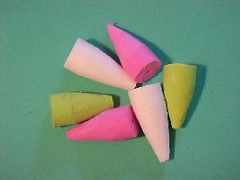
{{+1}}Articulated popper head – #8 weight estuary & native species{{-1}}
{{start}}
As a teaser a popper will often excite pelagics such as trevally and queenies and give you the chance to present a more conventional fly. These articulated poppers are as simple as it gets. Thread your tippet through the hole in the simple closed cell popper head and tie on any unweighted deceiver or thing or a dedicated popper tail and your in business.{{end}}
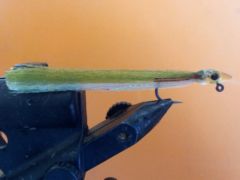
{{+1}}Candy – resin head minnow{{-1}}
{{start}}
This is a great fly to rip through the water in front of Tailor, Australian Salmon, Tarpon and any other fish that is a predator of small fish. The combination of the resin head and the body materials create a fly that is translucent and a very effective imitation of many small thin fish that that are targeted by bigger fish. This fly is much easier to tie than a candy and in my view a better fly overall.{{end}}
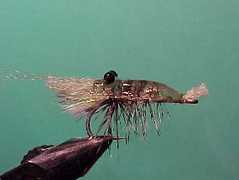
{{+1}}Rattle prawn{{-1}}
{{start}}
This is quite a realistic prawn or shrimp imitation and incorporates a little bit of flash and a rattle in the body. Its particularly useful as a salt water polaroiding fly when just a twitch is often enough inducement for a strike and in murky water where a stop start strip gets the rattle working. I tie it in Root Beer / Pearl, Olive / Chartreuse and Pink / pearl but other colour combinations also work.{{end}}

{{+1}}Straggle shrimp{{-1}}
{{start}}
I always fish it on a fast sink line with a leader of around 8 or 9 feet. The best retrieve is similar to spinning soft plastics i.e. jerky movements with plenty of pauses to let the fly to settle back on the bottom. Used in this way it's a good representation of a shrimp or prawn fleeing from its sandy or weedy retreat after being disturbed.{{end}}














